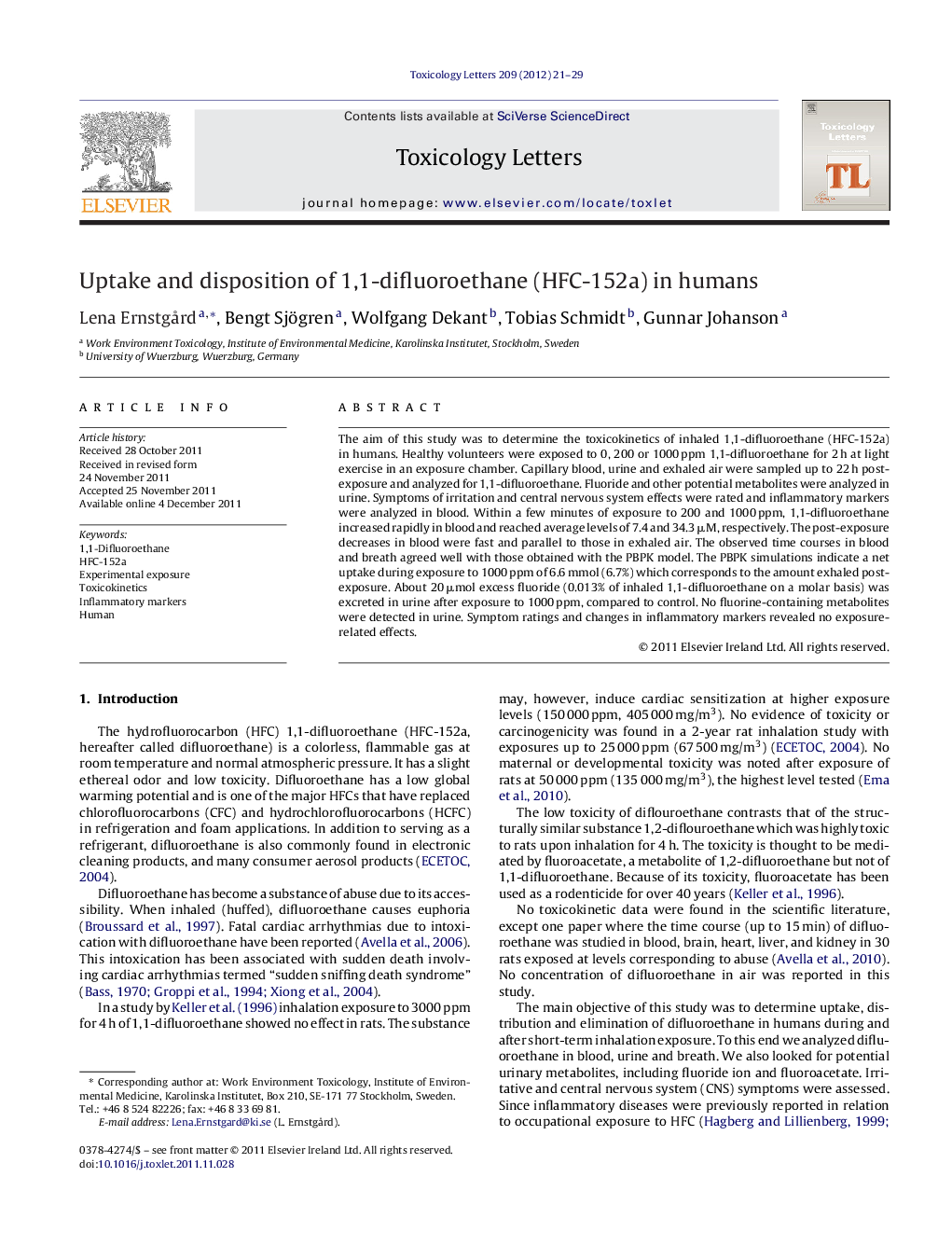| Article ID | Journal | Published Year | Pages | File Type |
|---|---|---|---|---|
| 2599832 | Toxicology Letters | 2012 | 9 Pages |
The aim of this study was to determine the toxicokinetics of inhaled 1,1-difluoroethane (HFC-152a) in humans. Healthy volunteers were exposed to 0, 200 or 1000 ppm 1,1-difluoroethane for 2 h at light exercise in an exposure chamber. Capillary blood, urine and exhaled air were sampled up to 22 h post-exposure and analyzed for 1,1-difluoroethane. Fluoride and other potential metabolites were analyzed in urine. Symptoms of irritation and central nervous system effects were rated and inflammatory markers were analyzed in blood. Within a few minutes of exposure to 200 and 1000 ppm, 1,1-difluoroethane increased rapidly in blood and reached average levels of 7.4 and 34.3 μM, respectively. The post-exposure decreases in blood were fast and parallel to those in exhaled air. The observed time courses in blood and breath agreed well with those obtained with the PBPK model. The PBPK simulations indicate a net uptake during exposure to 1000 ppm of 6.6 mmol (6.7%) which corresponds to the amount exhaled post-exposure. About 20 μmol excess fluoride (0.013% of inhaled 1,1-difluoroethane on a molar basis) was excreted in urine after exposure to 1000 ppm, compared to control. No fluorine-containing metabolites were detected in urine. Symptom ratings and changes in inflammatory markers revealed no exposure-related effects.
► We determined the toxicokinetics of inhaled 1,1-difluoroethane (HFC-152a) in humans. ► Volunteers were exposed to 0, 200 or 1000 ppm 1,1-difluoroethane for 2 h. ► A linear, first-order kinetics up to the highest tested level of 1000 ppm was found. ► The first time the toxicokinetic behavior of inhaled 1,1-difluoroethane is studied.
